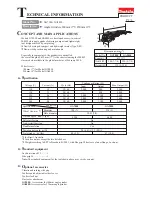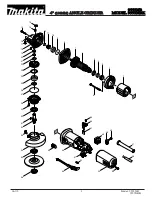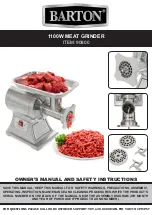
Troubleshooting Chart
Symptom
Possible Cause(s)
Corrective Action
Tool runs slowly or will not
operate
Moisture blowing out of tool
Excessive vibration
1. Grit or gum in tool
2. No oil in tool
3. Low air pressure
4. Air hose leaks
5. Pressure drops
6. Regulator adjusted
wrong
7. Worn ball bearing in
motor or in angle
head
1. Water in tank
2. Water in the air
lines/hoses
1. Damaged stone or
burr
2. Collet shaft bent
1.
Flush the tool with Campbell Hausfeld air tool oil, gum
solvent, or an equal mixture of SAE 10 motor oil and
kerosene. If Campbell Hausfeld oil is not used, lubricate
the tool after cleaning
2.
Lubricate the tool according to lubrication instructions in
Pre-Operation section
3.
Adjust the compressor regulator to tool maximum while
the tool is running free
4.
Tighten and seal hose fittings if leaks are found
5.
Be sure hose is properly sized. Long hoses or tools using
large volumes of air may require a hose with an I.D. of
1/2 inch or larger depending on total hose length
6.
Adjust regulator with slotted screwdriver to maximum
speed
7.
Remove and inspect bearing for rust, dirt, grit or worn
race. Clean and regrease bearing with bearing grease or
replace bearing
1.
Drain tank (See air compressor manual). Oil tool and run
until no water is evident. Oil tool again and run 1-2
seconds
2a. Install a water separator/filter (PA2121).
nOTe:
Separators
work properly only when air steam is cool Locate
separator/filter as far as possible from compressor
2b. Install an air dryer
2c. Anytime water enters the tool, the tool should be oiled
immediately
1.
Replace with new stone or burr
2.
Replace shaft or collet
3
TL052089
www.chpower.com


























